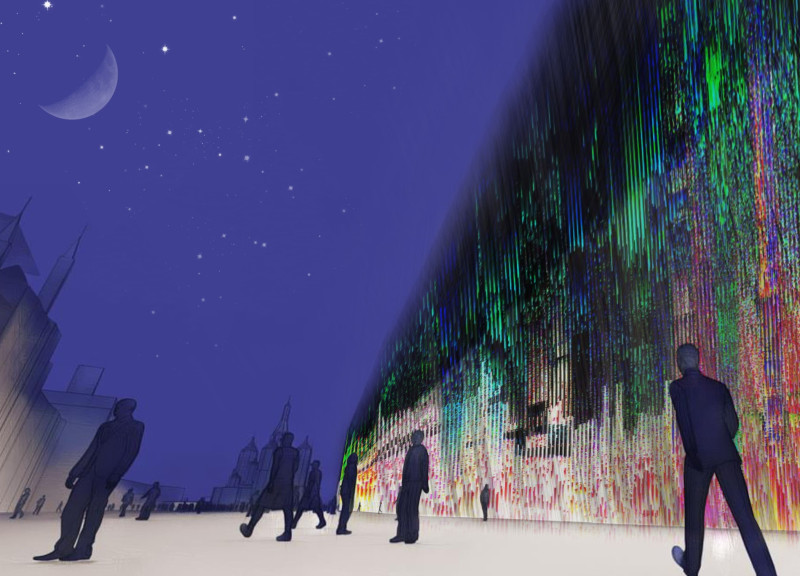5 key facts about this project
The Pavilion of Humanity, named "The Vessel," is an architectural project situated in Moscow’s Red Square. Designed as an exploration of human emotion through spatial configurations, light, and interaction, the pavilion serves as a platform for visitors to engage with and reflect upon their emotional experiences. The innovative use of materials and dynamic environmental design establishes a space that transcends traditional architectural norms.
Unique Conceptual Approach "The Vessel" represents a fusion of architecture and psychology, marrying structural design with emotional exploration. The pavilion's design utilizes fluid spatial arrangements to foster a sense of connectivity among visitors. It employs fiber optic cables, whose interactions with light vary based on the visitor’s movement, translating emotional states into a visual spectrum. This approach allows for collective emotional engagement, reflecting the complexities of human experience.
The concept prioritizes user experience by inviting visitors to navigate through different pathways that adapt based on their interactions. By shifting the spatial experience according to physiological responses, the design fosters a personalized connection for each individual. This responsiveness to human emotion distinguishes the project from conventional architectural endeavors that often prioritize aesthetics over experiential depth.
Innovative Material Use The materials selected for "The Vessel" enhance both the visual and experiential aspects of the pavilion. Fiber optic cables are integral to the dynamic facade, creating immersive light displays that evolve based on visitor engagement. Glass panels facilitate transparency and openness, reinforcing the idea of connection between the interior space and the external environment.
Structural steel provides the necessary strength for the complex geometries within the pavilion, allowing for intricate forms that reflect the broader conceptual themes. Additionally, reflective surfaces amplify light within the space, creating an illusion of depth and fluidity. Interactive screens offer information and engagement opportunities, further inviting visitors to participate in the exploration of their emotional states.
Environmental and Technological Integration "The Vessel" incorporates cutting-edge technology to foster interaction and personalization. Sensors monitor visitors' physical responses, enabling real-time adjustments to light and sound that correspond with each person’s emotional state. This aspect of the design not only enhances user engagement but also serves as an educational tool, promoting awareness of the relationship between emotion and physical environment.
The overall layout promotes a flow through various emotional landscapes, allowing for moments of solitude and contemplation amidst more engaging stimuli. Visitors are encouraged to explore areas that evoke different sensations, aligning with the pavilion’s goal of fostering a deeper understanding of human connectivity.
For further insights into "The Vessel," including architectural plans, sections, designs, and ideas, readers are encouraged to explore the comprehensive project presentation. Detailed visual representations and analyses will provide a more thorough understanding of this innovative architectural endeavor.























